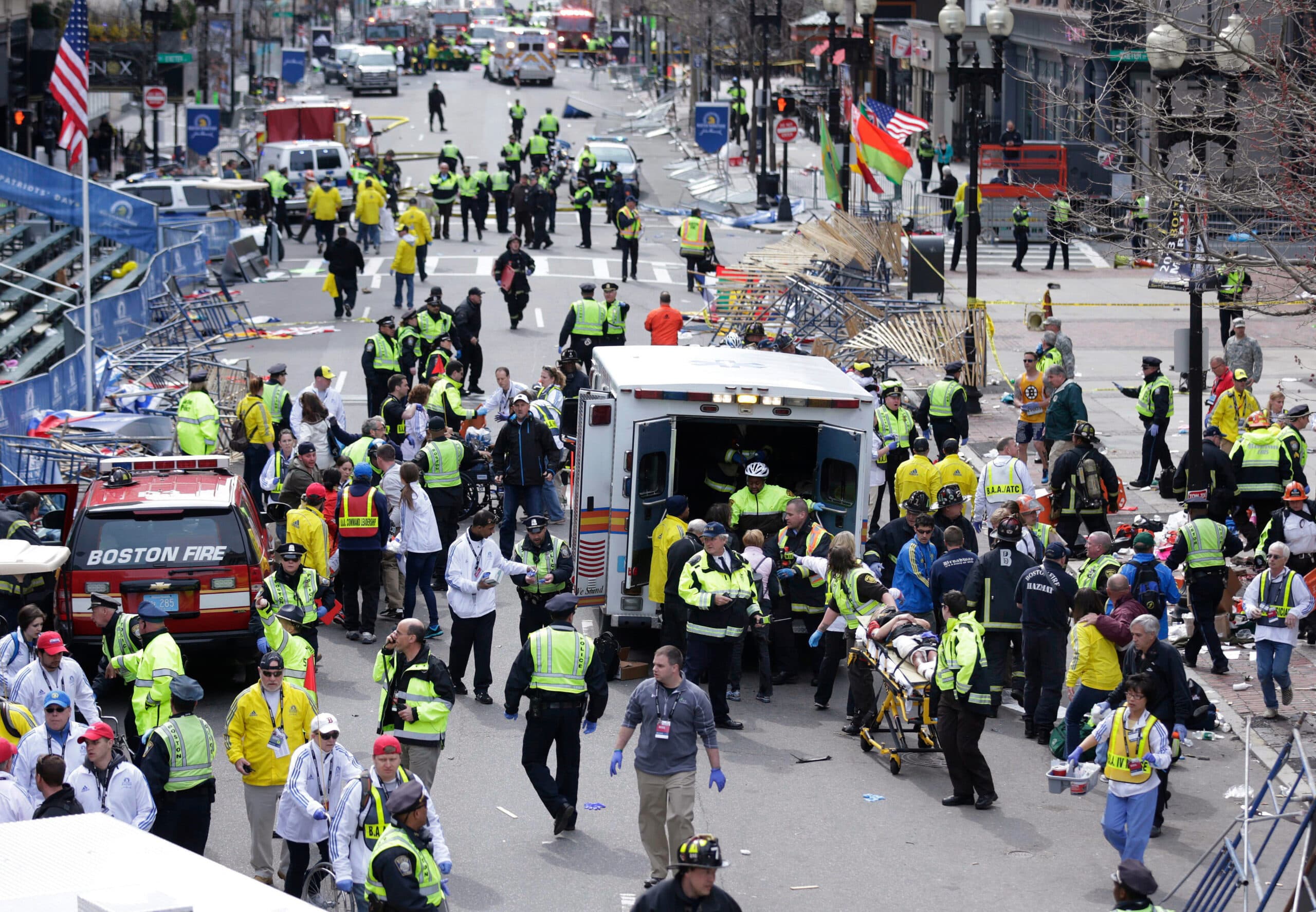
These Boston Marathon medical volunteers responded to the bombings — then healed each other
When he heard the first blast, Jack Foley thought maybe a transformer near the Boston Marathon finish line had blown. Foley, then a college sports medicine director, ran into the smoke. He knelt to check on an older runner, on the street, holding one leg.
Foley saw three police officers raise their guns on alert for something. Foley had no idea what.
“ 'Medical, medical, need you now,' ” Foley recalled another officer yelling, waving Foley toward a tangle of wood and metal fences. Foley saw bodies on the ground and smelled burnt clothing and flesh. People who could stand were slipping in blood.
Foley pulled off his belt and tightened it above shrapnel sticking out of a leg to stem the bleeding. He held the hand of another victim who slowly stopped squeezing back.
“It was like hell, walking in hell,” said Brian Fitzgerald, another athletic trainer and one of Foley’s closest friends. “It was just horrific.”
Nearly 10 years after two bombs exploded at the Boston Marathon, some medical volunteers stationed at the finish line are speaking, for the first time, about what they experienced that day and the bonds they forged — bonds that defy the inhumanity of two brothers who detonated the bombs in an act of domestic terrorism. Three people died at the scene: Martin Richard, 8, Lingzi Lu, 23, and Krystle Campbell, 29. Hundreds more were injured.
Inside a medical tent, about 50 yards from the first bomb site, nurse Lynn Landry was treating a runner knotted with cramps. She could hear screams. Through an opening in the tent, Landry saw bystanders and runners dash by, looking back over their shoulders.
“The only thing I could think of was 9/11,” Landry said.
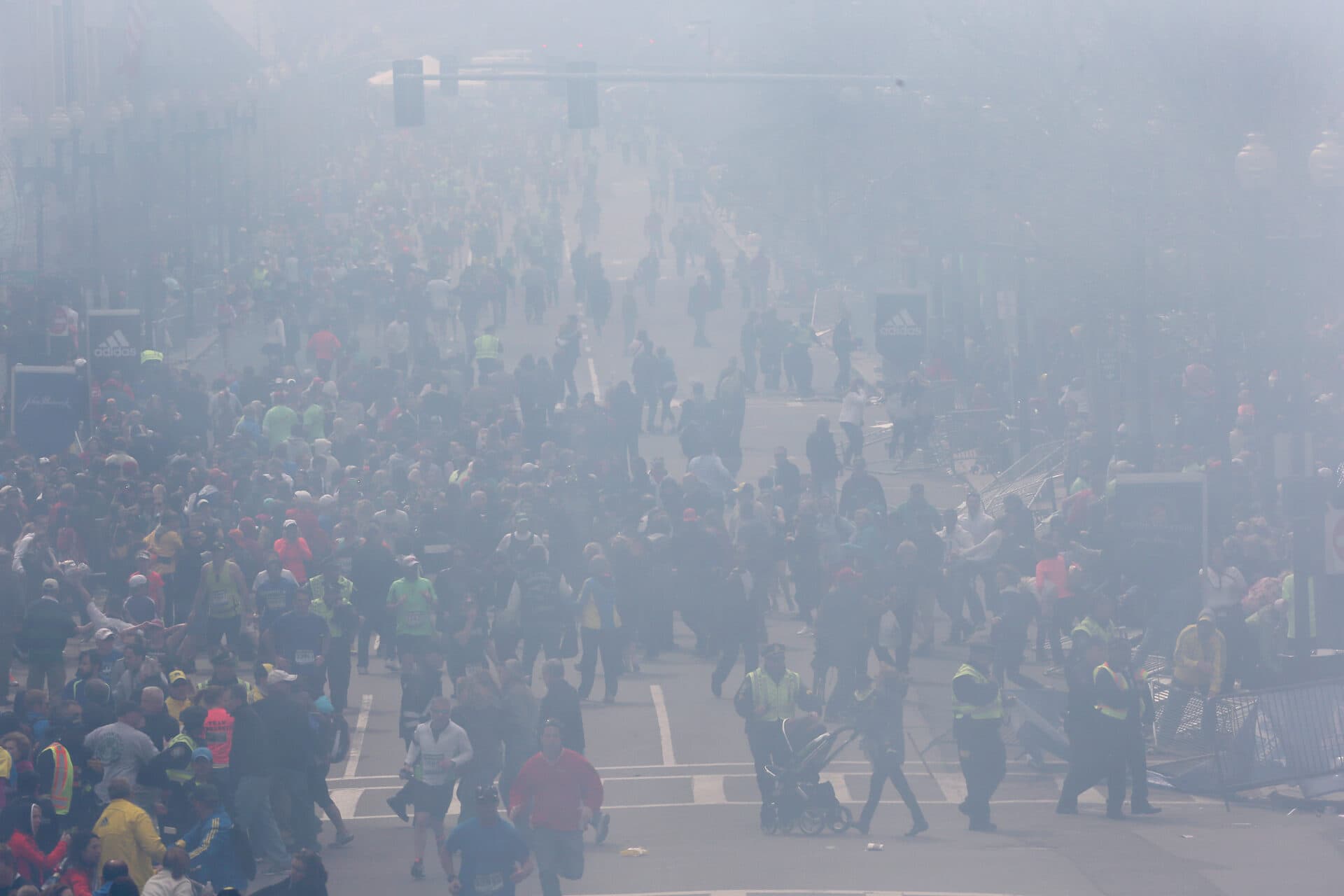
An announcer ordered anyone who could put in an IV to leave the tent. They were needed on the street. Landry, a 30-year veteran nurse at the time, left her spasming patient, grabbed IV supplies and, in what felt like slow motion, stepped out of the tent.
“And then I saw what everyone else saw on TV,” Landry said. A wheelchair carried a bloodied, soot-stained woman in a ripped coat whose head rocked to one side. Some of the victims looked to Landry like Halloween props. “I stopped dead and thought, I didn’t sign up for this. I don’t know if I can do this.”
A colleague pulled Landry back inside the tent. It was filling with injured bystanders who needed IVs. Landry tried to pull herself together as she searched for a vein on the woman with the torn jacket.
“I was shaking like a leaf,” said Landry, “but I got it in. And I thought, 'OK, this is what I’m going to do, just go from one patient to the next and put in IVs.' ”
Twenty-two minutes after the first bomb exploded, emergency responders had sent 97 people to local hospitals. Landry and other clinicians bandaged, medicated and comforted the less urgent victims and kept tending to runners. Someone hung a sheet inside the medical tent to create a makeshift morgue for Campbell, who died just yards away after the first explosion.
On a big screen TV where they had been monitoring the race, the medical volunteers watched chaos continue around them. News coverage showed bomb scares around the city. They heard police detonate at least one possible explosive nearby. A few medical volunteers fled.
“Now I could start to feel panic,” said Chris Troyanos, the marathon’s medical coordinator, who was fielding questions from volunteers. “They’re coming to me, ‘Where do we go? Where’s safe?’ I had no idea.”
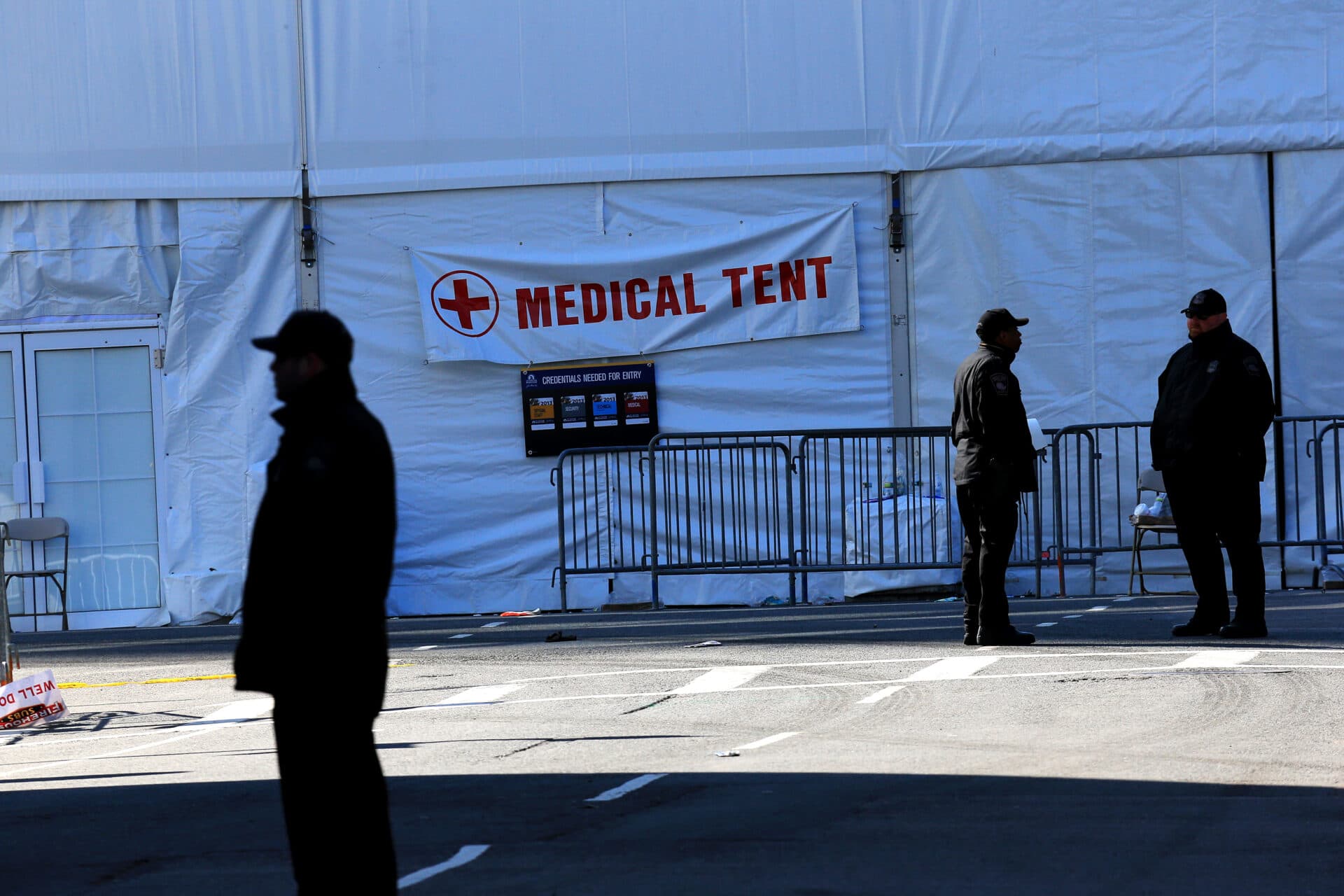
It was a difficult concession from a man whose mission for decades had been to address every Boston Marathon medical need and question before it was asked.
“Not that day,” said Troyanos. “Not that day at all. And I felt very bad. I couldn’t help people.”
Troyanos, along with scores of medical volunteers, first responders and bystanders, did help many, many people that Monday and beyond. Just days after the bombings, the Boston Athletic Association began sessions moderated by trauma experts where the 1,800 clinicians and more than 10,000 total volunteers could process what they'd experienced. Individual and group counseling was available for months.
Back at work in a local hospital, Landry realized she needed help.
“Sometimes I would pull back from patients,” Landry said. She found herself wondering, “How do I know they're not a terrorist? And I thought, 'Oh, this is so wrong.' ”
Landry spent hours at one counseling session with a pack of golden retrievers — comfort dogs.
“And oh my God, that was such an incredible experience,” she said. "Just crying inside the fur of those dogs really works.”
Landry had lunch that day with two other volunteer nurses. One of the women came with gifts, including pairs of red underwear.
“These are going to be our lucky race underwear,” Landry told her colleagues, laughing. The gift provided some welcome comic relief during a dark time. The underwear would make Landry and an emerging core group of volunteers laugh for years to come.
How the 'race medicine family' keeps running
By January of 2014, it was time for Troyanos to get ready for the next Boston Marathon — a race that would show the world Boston would not be cowed. But many medical volunteers were still focused on the horror of 2013.
“I gotta flip the switch,” Troyanos remembered thinking. “I've got to take more of a defiant approach. Now it's f-you to the terrorists.”
To boost spirits, Troyanos called on some of the bystanders who were still learning to walk on prosthetic legs. They taped videos Troyanos sent to his team. The central message: We’re healing; we need you to come back strong too.
Many did, but others took the year off. A few said they’d return if they could wear bullet-proof vests or bring a gun. Marathon staff said no to those requests. Troyanos attended one security briefing after another. When the emotion-packed 2014 marathon ended, Troyanos was done too.
“I just didn’t think I wanted to do this anymore,” he said. “Not because of the bombing — it was just overwhelming.”
But out of the fear, anger and despair, something powerful was taking shape, something that would revive Troyanos and the marathon medical operation. A small group — 12-15 people — started volunteering to help with more of the charity walks and races where Troyanos runs the medical tents.
At the end of each event, they found themselves sharing snacks and drinks around a cooler. Now there are dinners, Christmas parties and joint race vacations as the group travels with Troyanos around the country — as volunteers.
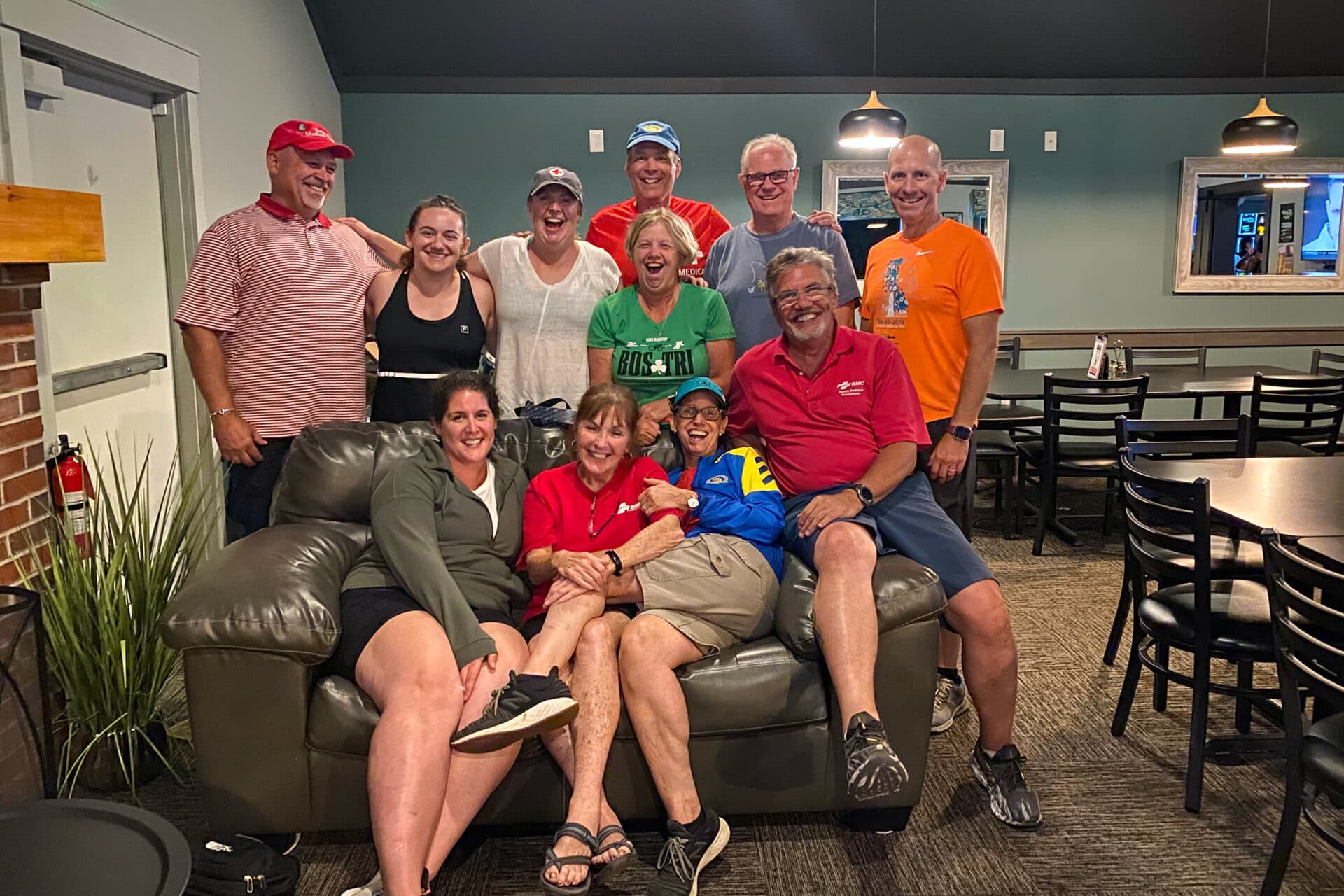
Troyanos has gathered a few members of what he calls his “race medicine family” for this conversation, the longest one they’ve had about the day that instilled an ironclad bond.
“Every one of these people,” said Troyanos, looking around the room, ”I trust them with my life. I know that they’re going to do what we need and I never question it.”
The family includes Landry and Fitzgerald who stayed at their posts on April 15, 2013, until police ordered them to leave. Sara Menendez, another athletic trainer, was volunteering for the first time that year. She doesn’t want to discuss the bombings or the hours just after.
“Because that’s not a defining moment,” she said. “We have come together afterwards, and that’s what we focus on.”
"Every one of those people, I trust them with my life."
Each volunteer has their special assignment. Ken McCarter, Landry’s husband, packs the equipment truck. Joni Troyanos, Chris’s wife, manages the medical records. Brett Grieco, an emergency medical technician, is Troyanos’s assistant medical coordinator. Race days start with wake-up calls and a playlist, which Menendez says works wonders at 4 a.m.
Lucky red underwear has become part of the race family uniform.
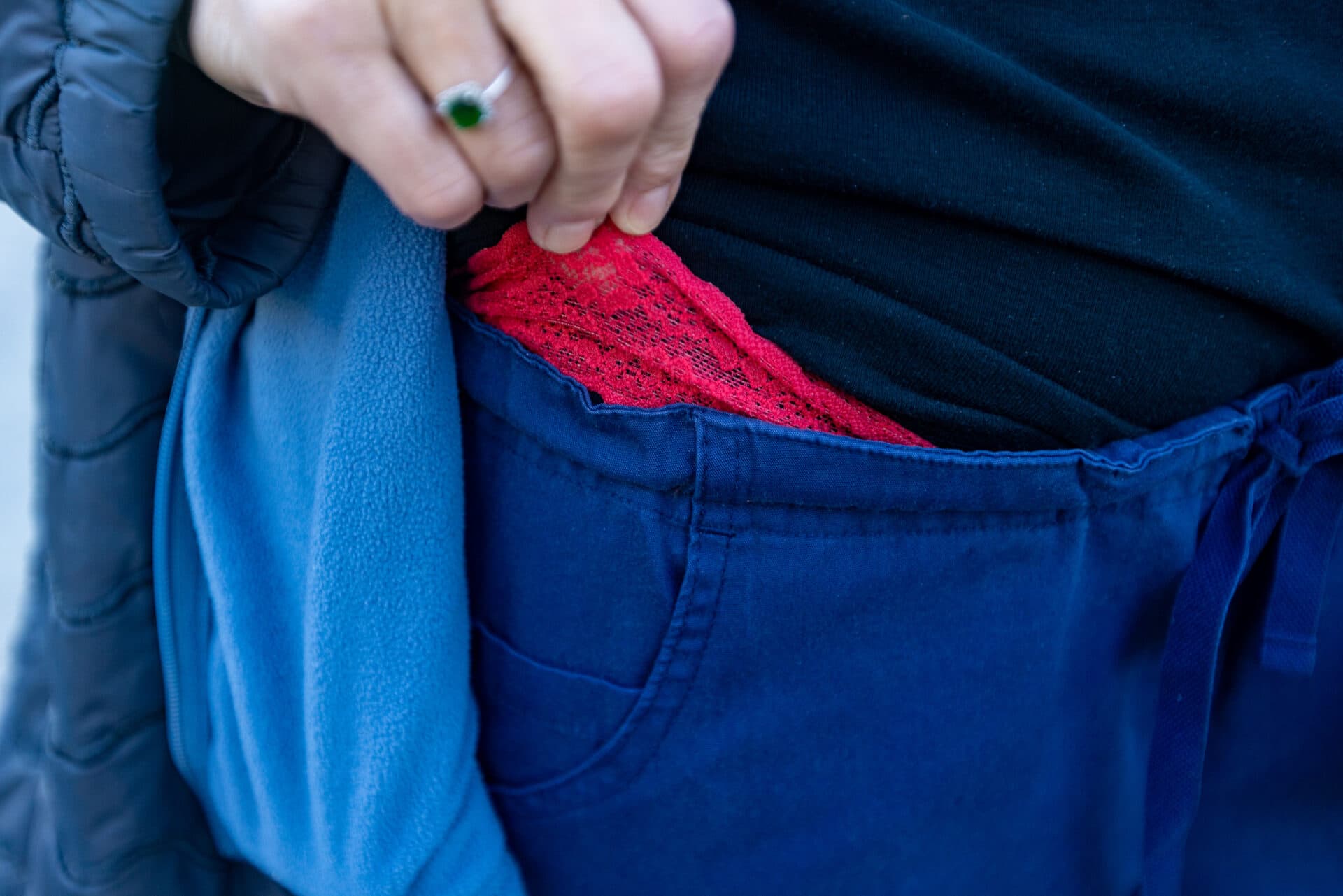
Family members come and go. Jack Foley has cancer and has stopped volunteering at the marathon. Foley says the sacred bond he feels with Fitzgerald, Troyanos and others — and the trauma he processed after the bombings — are helping him cope with another life-changing experience.
Today Foley repeats the same mantra he used to emerge from the dark days after the bombings.
“Live in the moment,” Foley tells himself, “plan for the future, enjoy the gift of another day.”
Races are still stressful. In 2022, the medical team treated a record 72 cases of heat stroke at four events. On one unusually hot day, a runner’s core temperature rose above 112 degrees, which Troyanos says would be fatal if the person were not cooled immediately. This team has not lost a runner.
Troyanos says marathon medical directors from around the world visit Boston and ask how they can replicate his operation. Troyanos introduces them to the race family. Recreating that, he shrugs, you can’t. Because together, this family has learned they can face anything.
“We have to be there, we have to be there for each other,” said Emma Nelson, an orthopedic physical therapist. “It’s difficult to put into words exactly what it means, but it means everything.”
Correction: An earlier version of this story misstated Sara Menendez's last name. And Jack Foley tightened his belt above a shrapnel wound to stem bleeding. We regret the errors.
This article was originally published on April 10, 2023.
This segment aired on April 10, 2023.
